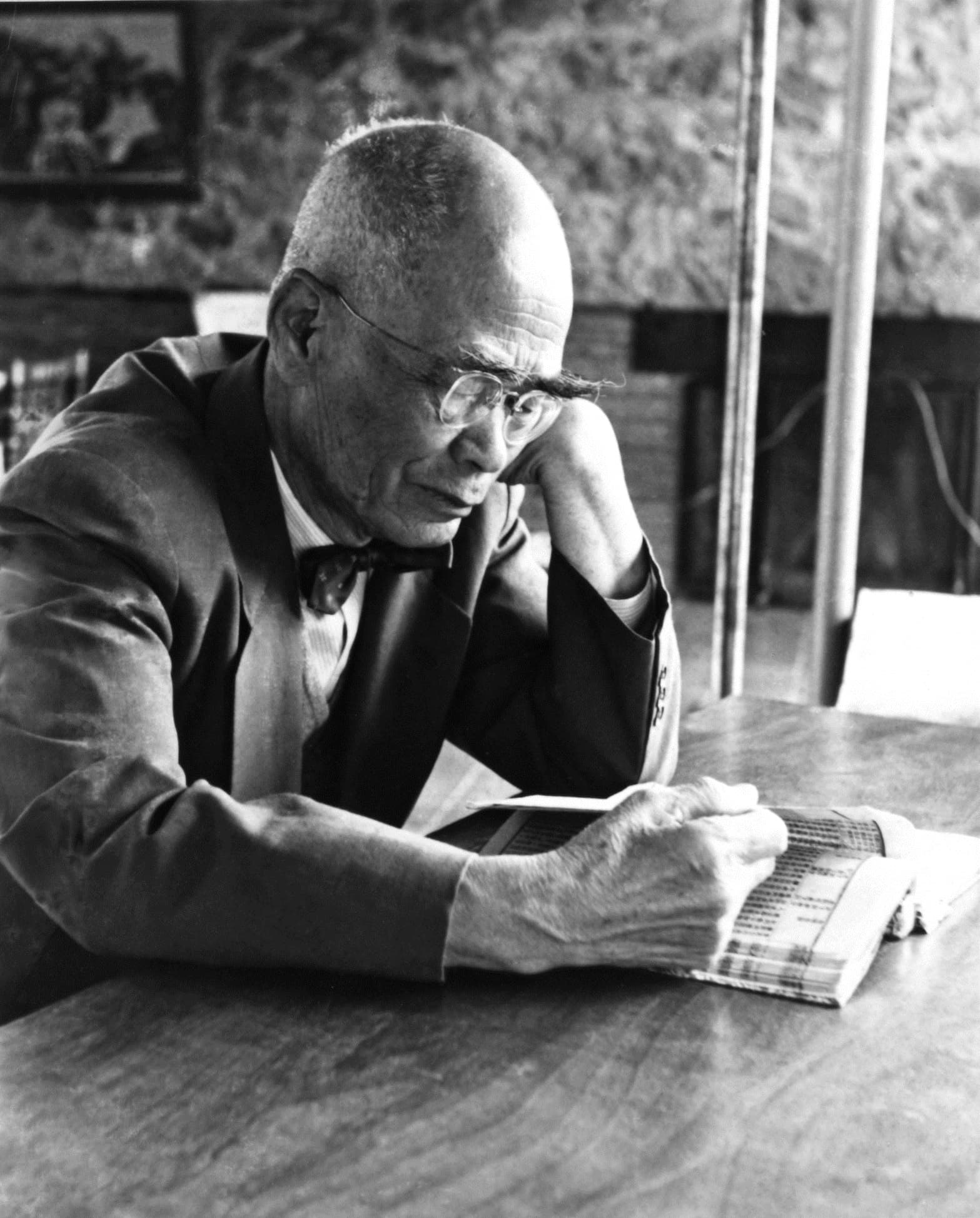Kyūdō is one of Japanese traditional Budo. The word “Kyūdō is Standing Zen” is an expression of how deep it is. When we say Zen in Kanazawa, we think of the philosopher Daisetzs Suzuki who born in Kanazawa. He wrote the preface to the English version of the German philosopher Herrigel's book "Zen in the Art of Archery".
Let's introduce a story that feels the relation between Kyūdō , zen, D.T.Suzuki and Kanazawa.
Kyūdō is Standing Zen
Within the world of kyūdō, there are unique concepts such as “ shooting is humanity”, “shooting is life” and “shooting is standing zen”. These sayings refer to the idea of transforming the human experience into something richer, deeper and more plentiful through the practice of kyūdō. The dōzukuri (forming the torso) stance used in archery is exactly the same as a standing form of zazen meditation, which can be referred to as standing zen. Along with the development of character, kyūdō also enhances the sentiment and will of those who practice it. In other words, this union of zen and archery not only converts archers to a zen lifestyle, but also with every arrow shot, increasingly aligns the body and soul with that of mother nature.
Summarization of content referenced from Kyūdō Textbook vol. 1-3 (All-Japan Kyūdō Union Publication).
The preface to Zen in the Art of Archery
If one really wishes to be master of an art, technical knowledge of it is not enough. One has to transcend technique so that the art becomes an “artless art” growing out of the Unconscious.
Man is a thinking reed but his great works are done when he is not calculating and thinking. "Childlikeness" has to be restored with long years of training in the art of self-forgetfulness. When this is attained, man thinks yet he does not think. He thinks like showers coming down from the sky; he thinks like the waves rolling on the ocean; he thinks like the stars illuminating the nightly heavens; he thinks like the green foliage shooting forth in the relaxing spring breeze. Indeed, he is the showers, the ocean, the stars, the foliage.
-D.T.Suzuki
D.T. Suzuki(1870-1966): Born in Kanazawa, philosopher Suzuki Daisetz is known internationally as D.T. Suzuki, and is highly credited for successfully conveying his ideas pertaining to zen, Buddhism and Japanese and Eastern-Western culture throughout the world. Suzuki’s English publication, Zen Buddhism and Its Influence on Japanese Culture is known as his representative work, and points out the influence of zen on a broad range of Japanese culture, including fine arts, kendo, haiku poetry , tea ceremony and noh theater. Through his writings, Suzuki describes the “unconsciousness” of the arts as the ideal condition.
Eugen Herrigel(1884-1955): German philosopher Eugen Herrigel (1884-1955) came to Japan in 1924 and took a teaching job at the Tohoku Imperial University. There, he learned kyūdō from archery master Awa Kenzo, after which he returned home to Germany and authored the work Zen in the Art of Archery. The English version includes a preface written by Suzuki.
D.T.SUZUKI MUSEUM

©D.T.Suzuki Museum
The D.T.SUZUKI MUSEUM is an ideal place for visitors both inside and outside Japan to deepen their understanding of the ideas and achievements of Daisetz Suzuki, a prominent Buddhist philosopher best known as D.T.Suzuki, and is also a place for self-reflection.
Outline of Facilities: Reinforced concrete with a steel skeleton Flat building and two-story storehouse
Total floor area: 631.63㎡
Groundbreaking: October 2010
Completion: July 2011
Designed by: Yoshio Taniguchi, Taniguchi and Associates
D.T.Suzuki Museum


